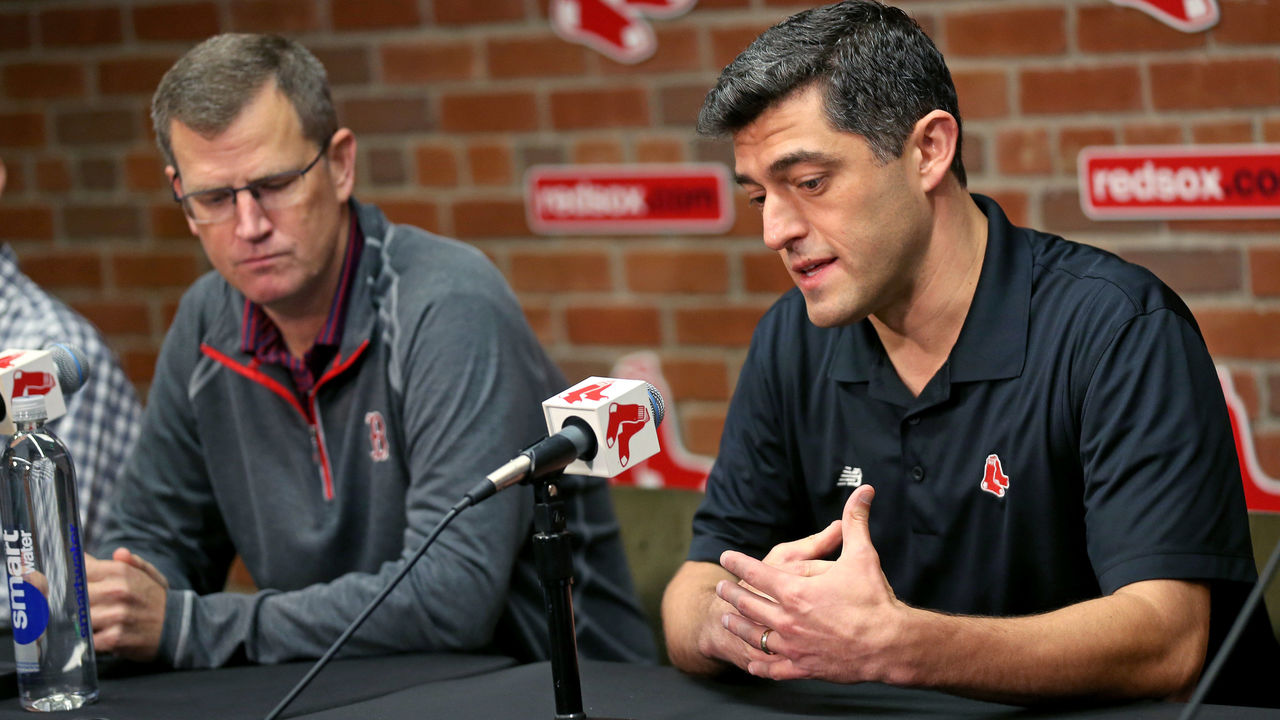Deadline showed teams may not be willing to pay for a measly wild-card spot
Historically, Major League Baseball's trade deadline is a frantic time when clubs with reasonable, although perhaps not rock-solid, playoff chances attempt to improve their odds, and teams that are clearly out of the race look to retool.
But the formula seemed to change this year.
The attitude of the two clubs competing for the American League Central was something like this at the deadline: "Sure, it would be nice to win the division, but we're not going to go out of our way to make it happen."
MLB might need some new postseason incentives. (We propose some later).
The Minnesota Twins didn't make a trade. They held just a one-game lead on deadline day over the Cleveland Guardians in the AL Central, the MLB neighborhood most in need of something like a homeowner association.
Despite being one game back and with a 28% playoff probability on FanGraphs entering deadline day, the Guardians were sellers.
One could argue that Cleveland operated rationally by picking up prospects and shedding payroll with its three moves: removing struggling regulars Amed Rosario and Josh Bell and finding a sell-high deal for oft-injured starting pitcher Aaron Civale.

In the NL Central, the Cincinnati Reds are riding a magical season with an exciting young core and fans responding with an attendance boom. But even though it held a 38% playoff probability Tuesday, Cincinnati made only one move to add depth to its bullpen.
The Reds are fourth in attendance gain over 2022 - 304,830 total fans or 5,645 per home date - and the Guardians are enjoying the second-greatest bump (364,026/7,001) through play Wednesday.
Neither franchise sent their fans thank-you cards, and perhaps their choices will be proven correct in the long term.
In the AL East, four teams had 30% or better playoff chances, while the New York Yankees stood at 18%. The Boston Red Sox and Bronx Bombers - teams typically adding at the deadline if a playoff berth is plausible - remained on the sidelines. New York was the only club not to make a single trade in July.

Yankees GM Brian Cashman told reporters they approached the deadline as "opportunistic buyers and opportunistic sellers."
Cashman hit on what's occurring in this new era: More teams are willing to play both sides of the buy/sell fence, even if they're in contention.
There are more clubs with plausible paths to the playoffs due to the additional postseason team added in 2022, but being a division winner no longer guarantees you a spot in a division series.
Despite the example of the Philadelphia Phillies reaching the World Series last season as a wild-card team, it appears decisions made this year created two classes of buyers at the deadline.
Teams with realistic chances of earning a No. 1 or 2 seed were the most aggressive at the deadline.
The clubs that generally made the biggest splashes - Astros (Justin Verlander), Rangers (Max Scherzer, Jordan Montgomery), Rays (Civale), Orioles (Jack Flaherty), and Dodgers (Lance Lynn, Joe Kelly) - had 40% or better chances of earning a first-round bye, according to FanGraphs playoff odds.
Then there's another tier of buyers, those unwilling to do much buying and who might be more interested in becoming opportunistic sellers like the Guardians. Cleveland received one of the two consensus top-100 prospects traded at the deadline (Kyle Manzardo in the Civale trade).
When talking about the hesitancy to invest too much in a play-in round berth, one MLB executive told me prior to the deadline, "Even if you get past the wild-card round, you're going to have to face an excellent team."
Clubs generally seem to have the same thinking, unless they're like the Marlins, who rarely reach the postseason, or the Angels, who are in an unusual situation of rostering a once-in-a-century talent for another two months.

Several executives also said during their post-deadline conference calls that trade prices were too high.
But that doesn't appear to line up with what happened. As mentioned, only two consensus top-100 prospects were traded (Manzardo and Luisangel Acuna), and the New York Mets shipped nearly $90 million along with Scherzer and Verlander to improve their prospect returns. That's not exactly an extremely favorable seller's market.
MLB may have a problem if teams aren't valuing all division titles.
It might need a third tier of playoff teams. Not just bye and non-bye clubs, but another layer of incentive for the play-in round.
We've previously proposed the best-of-two, wild-card round, in which the better-seeded team needs to win once to advance, and the lesser seed must win twice. This format is used in the KBO's wild-card round. And it makes the better seed a lot more valuable.
Perhaps MLB needs to reconsider its division format if teams in the Central Divisions aren't interested in competing for division crowns if they're not tied to a bye.
The league will have to do that soon regardless, assuming the expansion to 32 clubs comes to fruition. MLB will then have to decide between eight four-team or four eight-team divisions. If there ends up being two classes of division winners in an eight-division universe, then perhaps the choice should be two divisions in each league.
When clubs with reasonable playoff chances are selling, MLB ought to reconsider why those decisions were made and what it can do to fix it.
Travis Sawchik is theScore's senior baseball writer.
HEADLINES
- Report: A's ink Soderstrom to 7-year, $86M extension
- Brunson leads Knicks' comeback to beat Cavs in Christmas thriller
- Report: Giants interested in Bellinger; Dodgers, Yanks still pursuing star
- Jaguars' Lewis out for year with foot injury
- Mobley makes quick return from calf strain to rejoin Cavs on Christmas